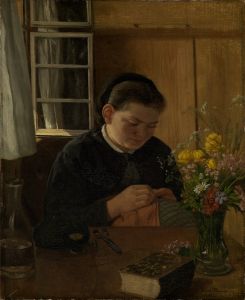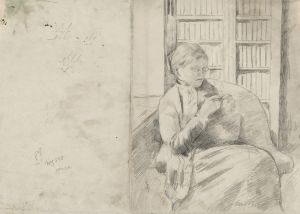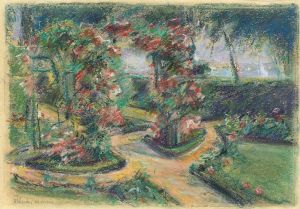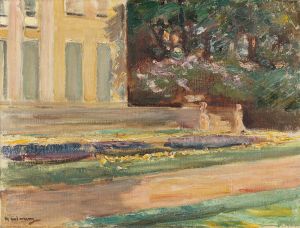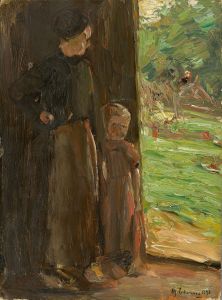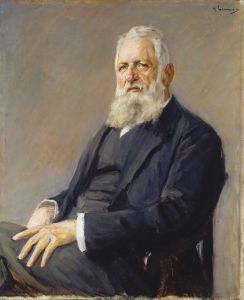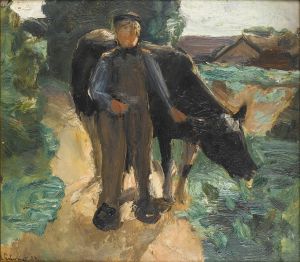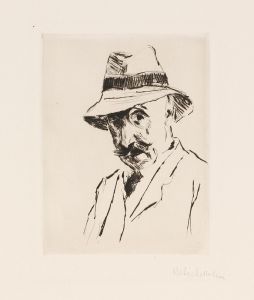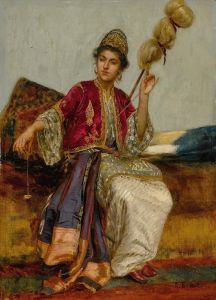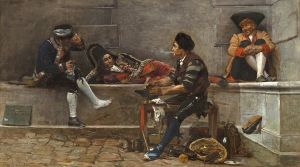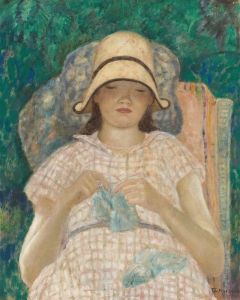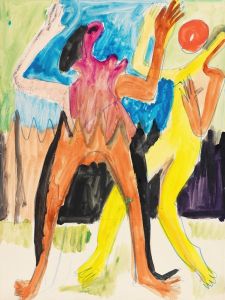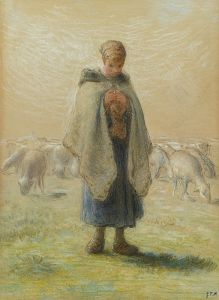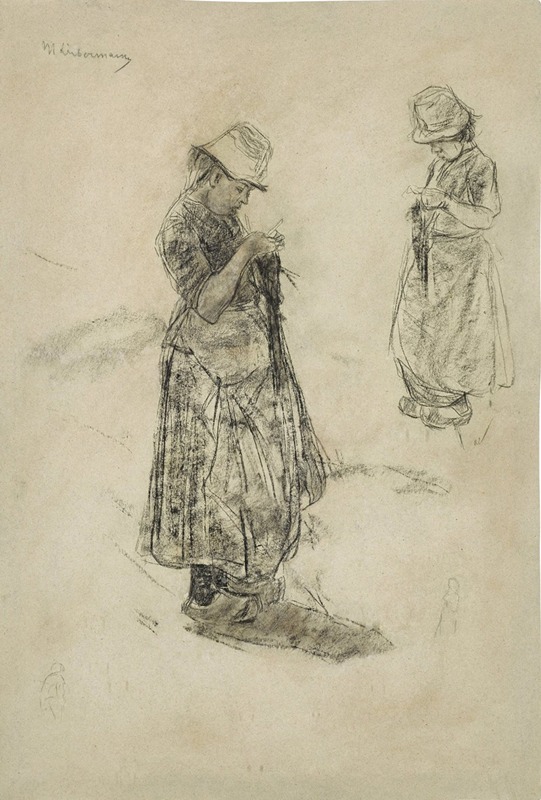
Strickende Mädchen
A hand-painted replica of Max Liebermann’s masterpiece Strickende Mädchen, meticulously crafted by professional artists to capture the true essence of the original. Each piece is created with museum-quality canvas and rare mineral pigments, carefully painted by experienced artists with delicate brushstrokes and rich, layered colors to perfectly recreate the texture of the original artwork. Unlike machine-printed reproductions, this hand-painted version brings the painting to life, infused with the artist’s emotions and skill in every stroke. Whether for personal collection or home decoration, it instantly elevates the artistic atmosphere of any space.
"Strickende Mädchen" (Knitting Girls) is a painting by the German painter Max Liebermann, a prominent figure in the German Impressionist movement. Liebermann was born on July 20, 1847, in Berlin and became one of the leading artists of his time, known for his depictions of everyday life and his role in the Berlin Secession, an art movement that sought to break away from traditional academic standards.
The painting "Strickende Mädchen" was created in 1882. It is an oil on canvas work that measures 75 cm by 100 cm. The painting depicts a serene and intimate scene of young girls engaged in the act of knitting. This subject matter is characteristic of Liebermann's focus on ordinary people and their daily activities, reflecting his interest in realism and the depiction of contemporary life.
In "Strickende Mädchen," Liebermann employs a naturalistic style, capturing the quiet concentration of the girls as they knit. The composition is balanced, with the figures arranged in a way that guides the viewer's eye through the scene. The use of light and shadow adds depth and dimension to the painting, highlighting the textures of the girls' clothing and the surrounding environment.
Liebermann's choice of subject matter and his approach to painting were influenced by his exposure to the works of the French Realists and Impressionists during his time in Paris. He admired artists such as Jean-François Millet and Édouard Manet, whose works depicted the lives of ordinary people with a sense of dignity and realism. This influence is evident in "Strickende Mädchen," where Liebermann captures a moment of quiet industry and domesticity.
The painting is also notable for its portrayal of the girls' expressions and postures, which convey a sense of calm and focus. Liebermann's attention to detail and his ability to capture the subtleties of human behavior are evident in the way he renders the girls' hands and faces. The muted color palette and the soft, diffused light create a harmonious and tranquil atmosphere, enhancing the overall sense of peacefulness in the scene.
"Strickende Mädchen" is part of the collection of the Hamburger Kunsthalle, a major art museum in Hamburg, Germany. The museum houses an extensive collection of European art, and Liebermann's work is an important part of its holdings. The painting is considered one of Liebermann's significant works, exemplifying his skill in capturing the essence of everyday life and his contribution to the development of modern art in Germany.
Max Liebermann continued to be an influential figure in the art world until his death on February 8, 1935. His legacy is marked by his dedication to realism and his ability to depict the beauty and dignity of ordinary people and their daily activities. "Strickende Mädchen" remains a testament to his artistic vision and his contribution to the German Impressionist movement.





